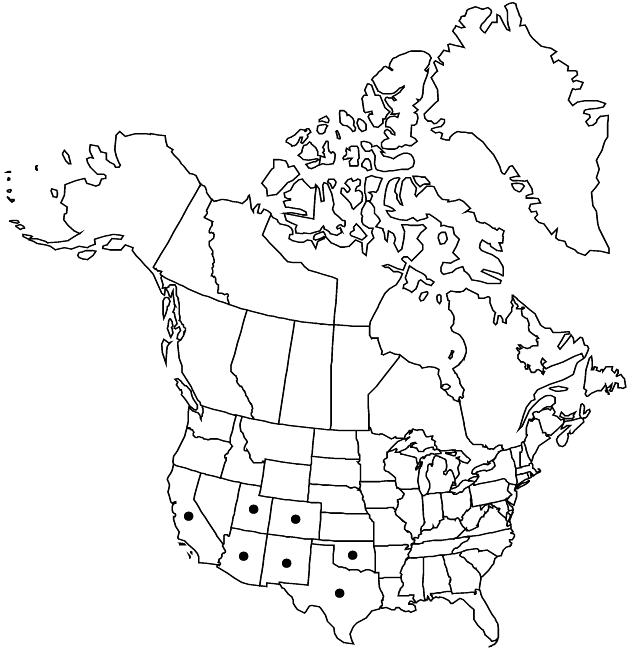Difference between revisions of "Pseudognaphalium canescens"
Opera Bot. 104: 147. 1991.
FNA>Volume Importer |
imported>Volume Importer |
||
| (5 intermediate revisions by 2 users not shown) | |||
| Line 8: | Line 8: | ||
}} | }} | ||
|common_names=Wright’s rabbit-tobacco | |common_names=Wright’s rabbit-tobacco | ||
| − | |basionyms={{Treatment/ID/ | + | |basionyms={{Treatment/ID/Basionym |
|name=Gnaphalium canescens | |name=Gnaphalium canescens | ||
|authority=de Candolle | |authority=de Candolle | ||
| + | |rank=species | ||
| + | |publication_title=in A. P. de Candolle and A. L. P. P. de Candolle, Prodr. | ||
| + | |publication_place=6: 228. 1838 | ||
}} | }} | ||
|synonyms={{Treatment/ID/Synonym | |synonyms={{Treatment/ID/Synonym | ||
|name=Gnaphalium sonorae | |name=Gnaphalium sonorae | ||
|authority=I. M. Johnston | |authority=I. M. Johnston | ||
| + | |rank=species | ||
}} {{Treatment/ID/Synonym | }} {{Treatment/ID/Synonym | ||
|name=Gnaphalium texanum | |name=Gnaphalium texanum | ||
|authority=I.M Johnston | |authority=I.M Johnston | ||
| + | |rank=species | ||
}} {{Treatment/ID/Synonym | }} {{Treatment/ID/Synonym | ||
|name=Gnaphalium viridulum | |name=Gnaphalium viridulum | ||
|authority=I. M. Johnston | |authority=I. M. Johnston | ||
| + | |rank=species | ||
}} {{Treatment/ID/Synonym | }} {{Treatment/ID/Synonym | ||
|name=Gnaphalium wrightii | |name=Gnaphalium wrightii | ||
|authority=A. Gray | |authority=A. Gray | ||
| + | |rank=species | ||
}} | }} | ||
|hierarchy=Asteraceae;Asteraceae tribe Gnaphalieae;Pseudognaphalium;Pseudognaphalium canescens | |hierarchy=Asteraceae;Asteraceae tribe Gnaphalieae;Pseudognaphalium;Pseudognaphalium canescens | ||
| Line 48: | Line 55: | ||
-->{{#Taxon: | -->{{#Taxon: | ||
name=Pseudognaphalium canescens | name=Pseudognaphalium canescens | ||
| − | |||
|authority=(de Candolle) Anderberg | |authority=(de Candolle) Anderberg | ||
|rank=species | |rank=species | ||
| Line 63: | Line 69: | ||
|publication year=1991 | |publication year=1991 | ||
|special status= | |special status= | ||
| − | |source xml=https:// | + | |source xml=https://bitbucket.org/aafc-mbb/fna-data-curation/src/2e0870ddd59836b60bcf96646a41e87ea5a5943a/coarse_grained_fna_xml/V19-20-21/V19_682.xml |
|tribe=Asteraceae tribe Gnaphalieae | |tribe=Asteraceae tribe Gnaphalieae | ||
|genus=Pseudognaphalium | |genus=Pseudognaphalium | ||
Latest revision as of 19:54, 5 November 2020
Annuals or perennials, 20–70(–100+) cm; taprooted. Stems persistently tomentose, not glandular (2–3 mm diam. near bases). Leaf blades narrowly to broadly oblanceolate, mostly 2–4(–5) cm × 2–8(–15) mm, bases not clasping, not decurrent, margins flat, faces weakly bicolor, tomentose (adaxial less densely tomentose, sometimes sessile-glandular beneath tomentum). Heads usually in loose, corymbiform arrays. Involucres turbinate-campanulate, 4–5 mm. Phyllaries in 3–4 series, white (opaque to hyaline, dull to shiny), narrowly ovate-lanceolate, glabrous. Pistillate florets (16–)24–44. Bisexual florets (1–)2–5(–6), 5–6 more common in northern part of range. Cypselae ridged, weakly papillate-roughened. 2n = 28.
Phenology: Flowering Aug–Nov(–Jan).
Habitat: Lava beds, rocky sites, grasslands, oak, pine-oak, and pine woodlands
Elevation: 1100–2500(–2700) m
Distribution

Ariz., Calif., Colo., N.Mex., Okla., Tex., Utah, Mexico.
Discussion
Most plants of Pseudognaphalium canescens produce white, opaque, keeled, apiculate phyllaries; in the southern portion of its range (Jalisco southeastward) and scattered localities elsewhere, the phyllaries may be more hyaline and lack a pronounced keel and apiculum.
Selected References
None.